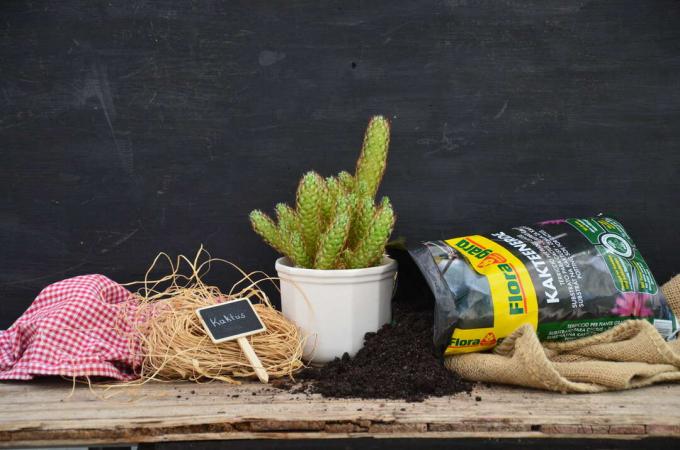Why cacti need a special soil, what to consider when buying a cactus soil and instructions for mixing yourself can be found here.

Cacti (Cactaceae) are plants that you either love at first sight or only appreciate them with skeptical looks. But those who have given themselves to the love of cacti do everything so that the favorites on the windowsill lack nothing. Here the focus is not on the regular watering and fertilization of the prickly plants, but on the soil in which the roots are embedded. Because of their special requirements, special cactus soil is available in stores. The properties of this earth are suitable for most Cactus species. But you can't get enough of mixed soil, especially with unusual specimens, because this way you can cater to the very individual needs of the cactus species. We have the right recipes for you.
contents
- Properties and peculiarities of cactus soil
- Buying cactus soil: what you should pay attention to
- Mix cactus soil yourself: Instructions
Properties and peculiarities of cactus soil
Not only is the appearance of cacti unique, their demands on the soil and its composition are also something very special. Because cacti belong to the succulents. That means they are adapted to locations where there is no water at least seasonally. The dry spells cacti easily overcome by storing water and nutrients in their thickened trunks or leaves. Their roots are also adapted to the local, rather barren soils and spread out flat just below the surface of the earth. This provides information about the special demands that cacti place on their soil in pots. For this reason, special cactus and succulent soil is also offered in specialist shops. This soil should have the following properties.
Optimal properties of cactus soil:
- Loose, for good water and air permeability and root penetration
- Retains moisture even after drying out completely
- Nutrient-rich

Buying cactus soil: what you should pay attention to
When buying cactus soil, particular attention should be paid to its composition. This provides information about whether the earth can also meet the above-mentioned conditions. It should contain humus as a source of nutrients. Loam or clay creates a slightly acidic pH that most species of cacti are happy with. Sand loosens the structure of the earth and ensures good water drainage. Do not save on the earth for your cactus, after all, the well-being of your prickly friend depends more on the structure of the soil than with other plants.
For example, the Floragard cactus soil. Thanks to a balanced dose of nutrients and a long-term stable soil structure, which is particularly good Including permeability and drainage capacity, this substrate offers an ideal basis for healthy Plant.
Mix cactus soil yourself: Instructions
If you prefer to use the personalized variant, you can simply mix your cactus substrate yourself. Mixing it yourself has the advantage that you can adapt the composition to the species. Cacti from desert regions like Echniocactus, Astrophyllum and Lophophora prefer purely mineral substrates, which are modeled on the barren, nutrient-poor soils of their homeland. They also offer particularly good drainage properties:
- 3 parts clay (lightly grind)
- 2 parts perlite (2 - 8 mm)
- 2 parts expanded clay (2 - 4 mm and broken) or expanded slate
- 2 parts lava gravel (2 - 4 mm) or pumice (2 - 4 mm)
- 1 part vermiculite

However, since not all species are adapted to extreme conditions, there are cacti that need a little more nutrients and water. Mineral-organic substrates are used here. These are more nutritious and better at storing water:
- 2 parts of potting soil
- 1 part quartz sand
- ½ part of pumice
- ½ part perlite
The proportions of organic and mineral components can be adapted to the species. Because there are species that prefer the organic content to a greater or lesser extent. Another advantage of self-mixed cactus soil is that the pH value can also be perfectly adapted to the species. With some species an individual adjustment is even necessary.
Note: Use high-quality quartz sand and not play sand. This usually has too high a calcium content and brings one or the other pest with it.
You can find out how to properly care for your cacti after planting in our article on the 5 best tips for caring for cacti and succulents.
Many thanks to Floragard for their support!
